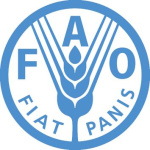- Industri: Agriculture
- Number of terms: 87409
- Number of blossaries: 0
- Company Profile:
Established in October 1945 with the objective of eliminating hunger and improving nutrition and standards of living by increasing agricultural productivity, FAO coordinates the efforts of governments and technical agencies in programs for developing agriculture, forestry, fisheries, and land and ...
1. Soluble protein that recognizes termination codons in mRNAs and terminate translation in response to these codons.
2. A hormone that is produced by the hypothalamus and stimulates the release of a hormone from the anterior pituitary gland into the bloodstream.
Industry:Biotechnology
1. Splicing part of a cloned DNA molecule into a different cloning vector.
2. The process of transferring a cloned DNA fragment from one vector to another.
Industry:Biotechnology
1. Structurally heterozygous individuals not identifiable on the basis of abnormal meiotic-chromosome pairing configurations ('cryptic structural hybrids').
2. A form of polymorphism controlled by recessive genes ('cryptic polymorphism').
3. Any mutation which is exposed by a sensitizing mutation and otherwise poorly detected (such mutations probably escape detection because of the plasticity of composition of the corresponding polypeptide).
4. Phenotypically very similar species (cryptic species) which do not hybridize under normal conditions.
5. Cryptic genetic variation refers to the existence of, for example, alleles conferring high performance for a trait, in a breed that has low performance for that trait.
Industry:Biotechnology
1. The attachment of biotin to another molecule.
2. The incorporation of a biotin-containing nucleotide into a DNA molecule.
Industry:Biotechnology
1. The cell mass produced by a population of living organisms.
2. The organic mass that can be used either as a source of energy or for its chemical components.
3. All the organic matter that derives from the photosynthetic conversion of solar energy.
Industry:Biotechnology
1. The effects on phenotypic characters of external agents during critical developmental stages.
2. The undefined interaction between tissues and culture medium resulting in the growth of single cells or small aggregates. Conditioning may be accomplished by immersing cells or callus contained within a porous material (such as dialysis tubing) into fresh medium for a period dependent on cell density and a volume related to the amount of fresh medium.
Industry:Biotechnology
1. The entire complement of genetic material (genes + non-coding sequences) present in each cell of an organism, or in a virus or organelle.
2. A complete set of chromosomes (hence of genes) inherited as a (haploid) unit from one parent.
Industry:Biotechnology
1. The fertilized ovum (zygote) in egg-laying animals after it emerges from the body.
2. The mature female reproductive cell in animals and plants.
Industry:Biotechnology
1. The four cells arising from the second meiotic division in plants (pollen tetrads) or fungi (ascospores).
2. The quadruple group of chromatids that is formed by the association of duplicated homologous chromosomes during synapsis in meiosis I. a.k.a. quadrivalent.
Industry:Biotechnology
1. The genetic material that forms the physical basis of hereditary and which is transmitted from one generation to the next by means of the germ cells.
2. An individual or clone representing a type, species or culture, that may be held in a repository for agronomic, historic or other reasons.
Industry:Biotechnology
